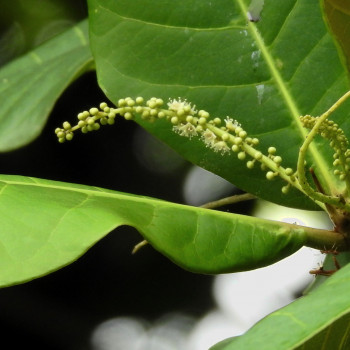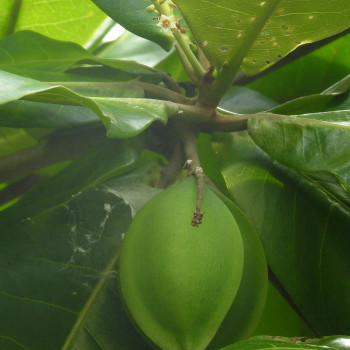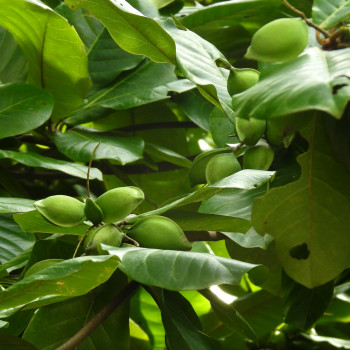Indian almond

Scientific Name :
Terminalia catappa L.
Synonym(s) :
Badamia commersonii Gaertn.
Local/Common name(s) :
Nattu-badam, Indian almond
Family :
Combretaceae
Habit :
Tree
Flowering/Fruiting Time :
March-January
Habitat :
Grown as ornamental plant
Endemic :
No
Status (IUCN) :
Least concern (LC)
Distribution :
Malaysia to North Australia and Polynesia, commonly planted in the tropics
Nativity :
Indigenous
Uses :
Ornamental
Description (Morphology) :
Trees, to 25 m high, often buttressed; bark brownish to grey, smooth; young shoots rusty or brown tomentose; branchlets brown to reddish-brown, terete with prominent leaf scars, glabrous on ageing. Leaves simple, alternate, densely clustered at the tip of branchlets; estipulate; petiole 8-15 mm long, stout, pubescent; lamina 13-34 × 6-20 cm, obovate, orbicular-obovate, base cuneate, acute or attenuate, apex round, obtuse, retuse or apiculate, margin entire, glabrous above, puberulent beneath, coriaceous; lateral nerves 6-13 pairs, pinnate, prominent, intercostae reticulate, prominent; domatia occasionally present; 2 prominent glands on either side at the base of the midrib beneath. Flowers polygamous, 4 mm across, sessile, white or yellowish-green, in axillary simple, rusty pubescent racemes to 8-21 cm long; calyx tube 3-5 x 1-1.3 mm, pubescent, expanded portion cupular, 3.5-5 × 3-5 mm; teeth 5, triangular or ovate, 1-2 x 1.5-2 mm, acute, glabrous; petals absent; stamens 10; filaments 3-4 mm long; anthers oblong, disc villous; ovary inferior, 5 mm long, 1-celled, ovule pendulous; style 2-4 mm long. Fruits a drupe, 3-7 × 2.5-4.5 cm, broadly ellipsoid to ovoid, laterally compressed, inflated, brown or reddish-brown, glabrous, glossy.




